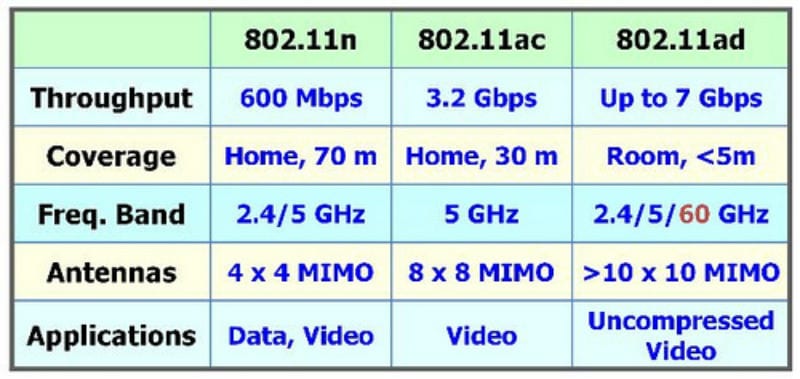802.11ad: What is it and When Will We See It?

Wireless technology is arguably the most important aspect of modern technology. With people carrying multiple devices and the emergence of the Internet of Things (IoT), without a stable secure and fast connection, the amazing devices, software and hardware becomes much less valuable. While we’re still very much involved with 802.11ac here at Solutions Review and have just released out full 2016 802.11ac Wireless Networks Buyer’s Guide, it’s enjoyable and necessary to look to the future of wireless and see what standards are currently in development and when we can expect to hear more about them.
This brings us to 802.11ad. Just yesterday Intel and Qualcomm set up their respective WiGig 802.11ad devices and were able to have their chips and antennas successfully link up under the right conditions. Recently, TP-Link announced the ‘world’s first’ 802.11ad router back in January. So what exactly is 802.11ad and why is so much work being put into it?
The IEEE 802.11ad standard is also known as WiGig and it adds a new 60GHz frequency band. While 802.11n operates in 2.4GHz and 802.11ac operates in 5GHZ, 802.11ad sits on top of that at 60GHz. Speeds like that are unheard of in commercial wireless right now, but it does come with a catch: 802.11ad is meant for very short distances (as shown in the chart above) and is very weak through walls, so at the moment, it isn’t too useful on the mobile front.
The WiGig standard is not too well known, although it was announced in 2009 and added to the IEEE 802.11 family in December 2012. According to the FCC:
“The WiGig specification allows devices to communicate without wires at multi-gigabit speeds. It enables high performance wireless data, display and audio applications that supplement the capabilities of previous wireless LAN devices. WiGig tri-band enabled devices, which operate in the 2.4, 5 and 60 GHz bands, deliver data transfer rates up to 7 Gbit/s, about as fast as an 8-band 802.11ac transmission, and more than 11 times faster than the highest 802.11n rate, while maintaining compatibility with existing Wi-Fi devices. The 60 GHz signal cannot typically penetrate walls but can propagate off reflections from walls, ceilings, floors and objects using beamforming built into the WiGig system. When roaming away from the main room the protocol can switch to make use of the other lower bands at a much lower rate, both of which can propagate through walls.”
It’s a disappointing that the full speed of 802.11ad can’t be met outside the access point’s one room radius, but the technology can still serve a significant purpose. Wiring an entire office with WiGig APs may be out of the question, but the backwards compatibility with 802.11n and 802.11ac is key. When the WiGig routers and capable devices become available, it would make sense for companies that house servers or transfer heavy amounts of data to have several of them near their more powerful machines.
For right now, 802.11ac is still the leading 802.11 wireless standard and will continue to be for several more years. I can’t see 802.11ad ever becoming a highly shipped standard, but it will certainly has its uses in situations where high amounts of data are being transferred.























